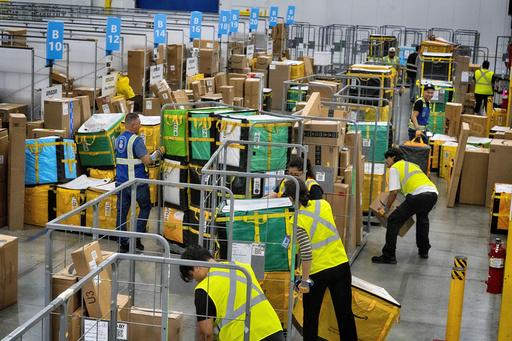According to a report released by a U.S. Senate committee, internal studies at Amazon have identified a correlation between the speed at which warehouse employees complete tasks and the occurrence of workplace injuries. However, Amazon allegedly disregarded several safety recommendations due to concerns that these changes might interfere with productivity levels. This information is outlined in a comprehensive 160-page document released by the Democratic majority staff of the Senate Committee on Health, Education, Labor, and Pensions. This report is the culmination of an investigation into Amazon’s safety protocols in its warehouses, a probe initiated last year by U.S. Senator Bernie Sanders.
Senator Sanders, an outspoken critic of Amazon and chair of the committee, previously shared interim findings in July, which were part of the broader investigation. The final report, which incorporated insights from interviews with almost 500 current and former employees, unveiled more detailed information, including the two internal studies conducted by the company. Following the report’s release, Amazon responded vehemently, asserting in a blog post that Senator Sanders was “misleading the American public” regarding their safety practices. The company further claimed that the report contained inaccuracies and selective information that fails to reflect the true situation.
One notable internal study, referred to as Project Elderwand, was initiated by Amazon in 2021 to assess the maximum number of repetitious physical tasks a warehouse worker could manage without incurring an elevated risk for injury, especially regarding musculoskeletal problems. The research specifically targeted workers responsible for retrieving items from robotic shelf systems. The findings suggested that the likelihood of back injuries escalated with an increase in item retrieval, setting a threshold for repetitive actions at 1,940 movements during a standard 10-hour work shift.
To enhance worker safety, the recommendations included utilizing software to schedule breaks tailored to individual worker performance rates. Additionally, it proposed widening an existing program that advocated for “microbreaks,” making them mandatory for employees exceeding the established pace limits. The project’s success hinged on ensuring there would be no adverse effects on either the employees or customer satisfaction, as noted in the documents referenced by the Senate committee. Ultimately, however, Amazon opted not to implement any adjustments to lessen the repetitive tasks faced by workers, citing “technical reasons” concerning the proposed software.
Amazon claimed that the pilot initiative for Project Elderwand proved that suggested interventions were “ineffective.” In tandem, the company had previously conducted another study known as Project Soteria in 2020, aiming to identify injury risk factors and propose safety improvements. This initiative assessed two temporary policies enacted during the COVID-19 pandemic—extending time off for employees and suspending disciplinary actions for those not meeting speed quotas. It was found that both measures contributed to a reduction in injury risks and recommended their permanent adoption.
Despite these findings, Amazon leadership rejected the proposal, expressing concerns that it would negatively impact productivity. The report indicated that Amazon’s leaders also redirected the focus of Project Soteria to emphasize recommendations for increasing output without compromising worker safety.
In response, Amazon’s spokesperson Kelly Nantel disputed these interpretations, stating that Project Soteria involved distinct evaluations, with one team assessing the relationship between work pace and injuries, and another reaffirming that the methodologies and conclusions were flawed. Nantel mentioned that the committee had overlooked crucial context regarding these assessments.
The Senate report also claimed that Amazon manipulates its workplace injury statistics, portraying a safer environment than reality suggests—a charge Amazon has denied. The company maintains that it provided extensive documentation to the committee; however, the majority staff asserted that key documents corresponding to the link between work pace and injuries were not produced.
Interestingly, the committee learned about the two internal studies through a worker safety case in Washington instead of directly from Amazon. Once the names of the studies were recognized, staff members reached out to Amazon, which eventually supplied the requested documents.



